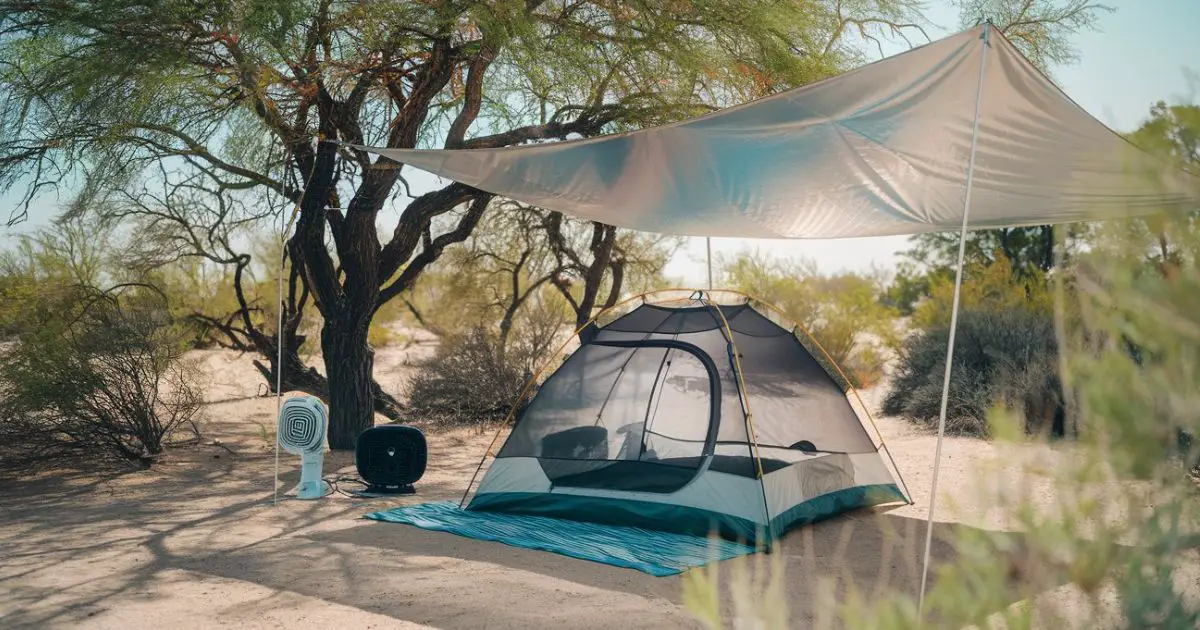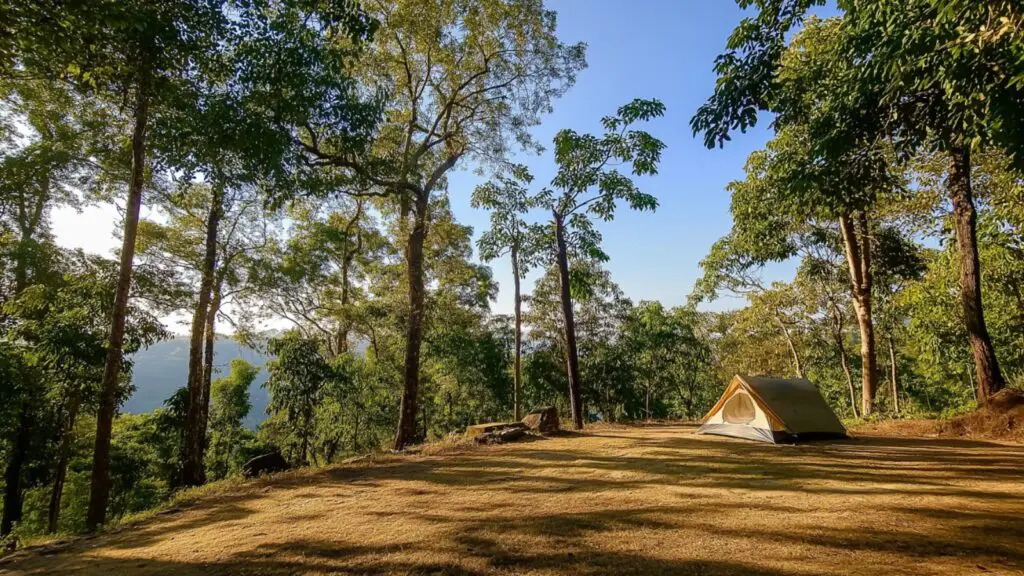5 Essential Tips to Stay Cool While Tent Camping in Hot Weather
Table of Contents
Introduction
Summer camping can be magical—long daylight hours, lakeside sunsets, and clear night skies. But when the temperature soars, your cozy tent can quickly turn into a sweltering sauna. According to the National Park Service, heat-related illnesses are one of the top weather-related concerns during summer outdoor recreation, especially in popular camping months like July and August. For tent campers, managing heat isn’t just about comfort—it’s about safety.
Whether you’re planning a weekend getaway or a cross-country road trip with nightly tent setups, staying cool in hot weather requires thoughtful preparation and a few clever tricks. The good news? You don’t need high-end gear or RV air conditioning to beat the heat.
This guide covers 5 essential tips for staying cool while tent camping in hot weather, with practical, field-tested advice for minimizing heat exposure, optimizing airflow, and choosing the right gear. From campsite selection to DIY cooling hacks, these strategies are tailored for outdoor enthusiasts who love the freedom of tent camping but want to stay safe and comfortable under the summer sun.
In-Depth Outline
1. Choose the Right Campsite Location
- Opt for natural shade: under trees, near rock formations
- Avoid low-lying areas that trap heat overnight
- Face tent doors away from direct sunlight
- Consider elevation: higher ground = cooler air
Table: Best vs. Worst Campsite Features for Heat
| Feature | Best Option | Avoid |
| Shade availability | Under tree canopy | Open fields |
| Sun exposure | East-facing in AM shade | West-facing (afternoon sun) |
| Ground location | Elevated, breezy spots | Valleys or basins |
2. Optimize Tent Ventilation and Setup
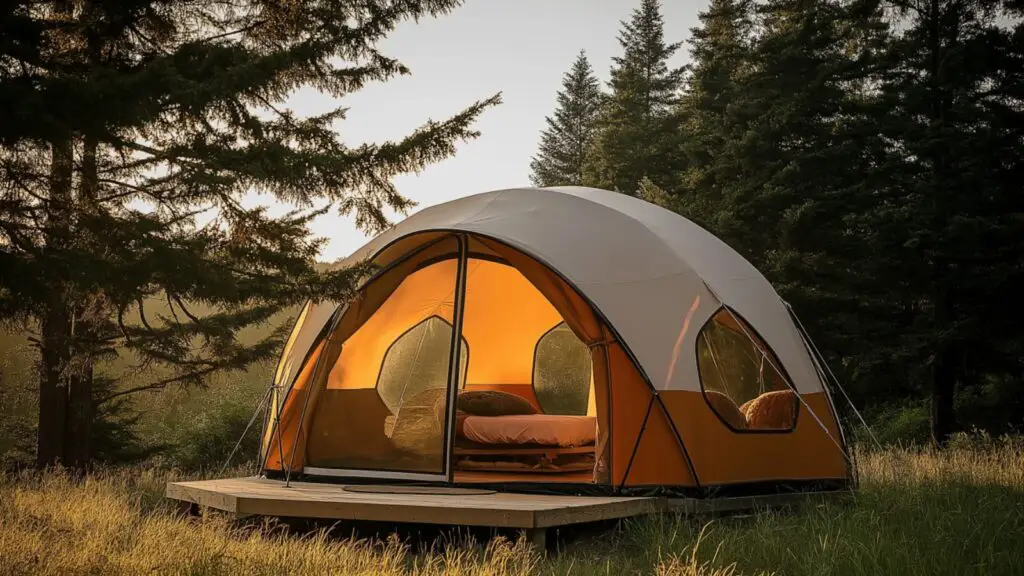
- Use mesh tents or those with large windows
- Open vents and rainfly flaps at night
- Remove the rainfly entirely (if weather allows)
- Pitch tent to catch prevailing breezes
- Reflective tarps or emergency blankets to deflect heat
Table: Ventilation Enhancements by Gear Type
| Gear or Setup | Cooling Benefit |
| Mesh tent walls | Increases airflow |
| Rainfly off (clear skies) | Maximum ventilation |
| Reflective tarp above tent | Blocks radiant heat |
| Dual doors open | Creates cross-breeze |
3. Stay Hydrated and Eat Light
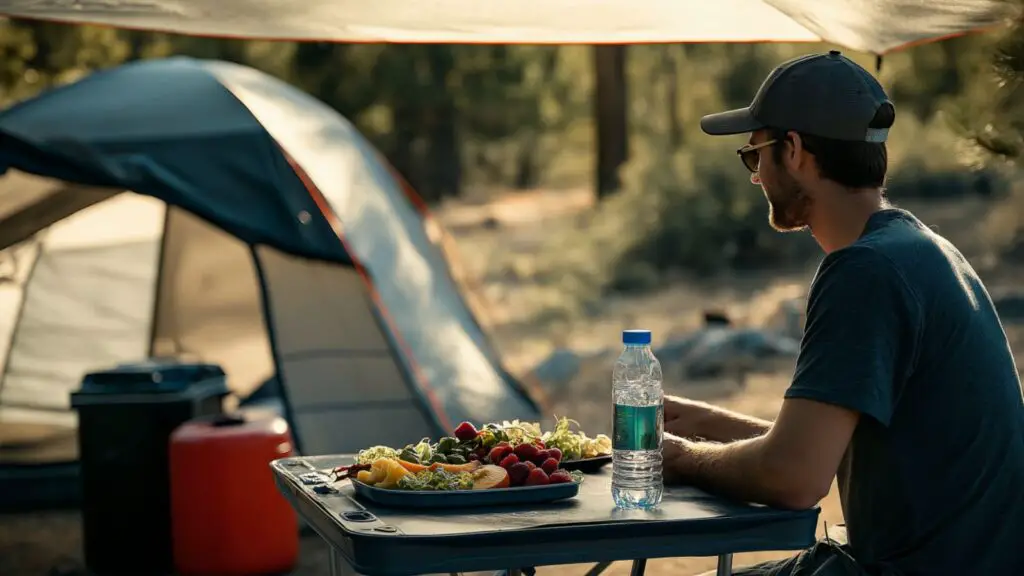
- Drink 2–3 liters of water per day (more with activity)
- Use electrolyte tablets or powders for hydration balance
- Eat hydrating foods: fruits, salads, smoothies
- Avoid heavy, spicy meals that raise internal temp
4. Use Cooling Gear and DIY Hacks
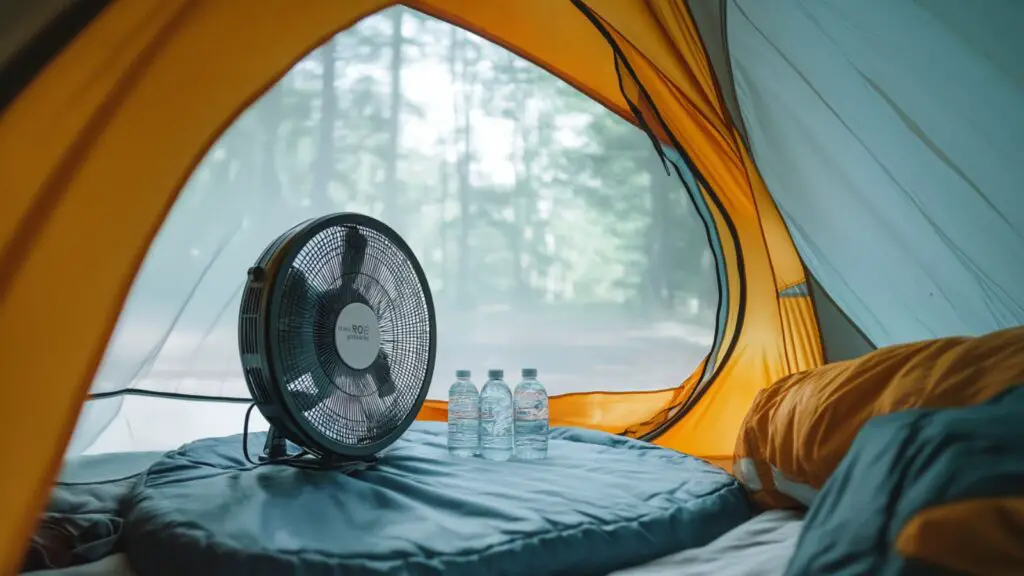
- Battery-powered fans or rechargeable neck fans
- Chill neck towels or bandanas in ice water
- Sleep on cooling pads or inflatable mats
- Freeze water bottles for in-tent cooling
Table: DIY vs. Store-Bought Cooling Options
| Method | Cost | Duration | Portability |
| Frozen water bottles | Low | 4–6 hours | High |
| Neck cooling towel | Medium | 1–2 hours | Very High |
| Battery tent fan | $10–$30 | 6–10 hours | High |
| Ice in a bowl w/ fan | Low | 1–2 hours | Moderate |
5. Camp Clothing and Sleep Prep
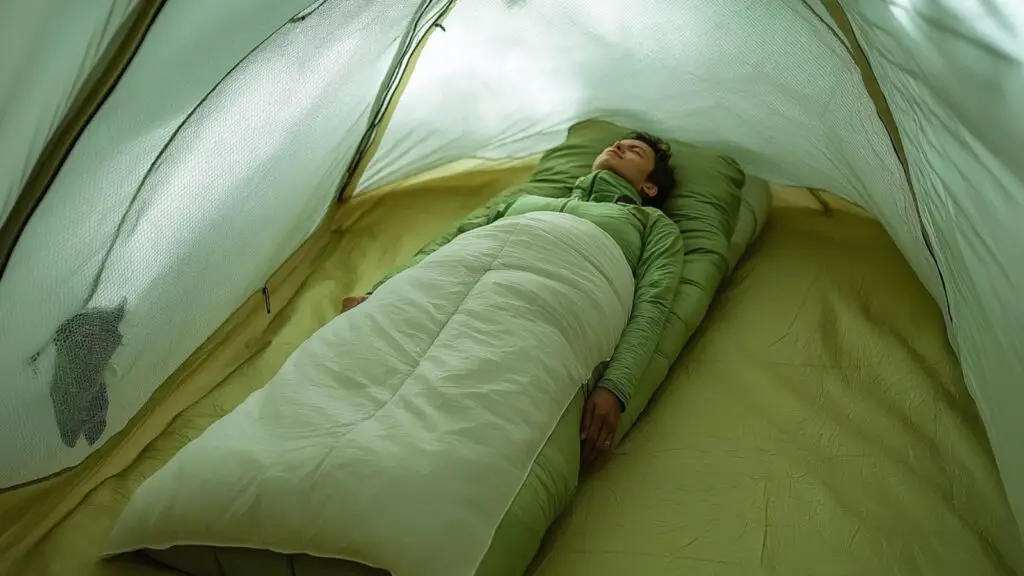
- Wear moisture-wicking, light-colored fabrics
- Avoid cotton—it retains sweat and heat
- Change into dry clothes before bed
- Sleep in minimal layers with a light blanket
- Use a mesh sleeping bag liner instead of full bag
Detailed Content Expansion
1. Choose the Right Campsite Location

Campsite selection is your first—and arguably most critical—step in staying cool during a hot-weather tent camping trip. Where and how you set up your tent can significantly affect how much heat you trap (or avoid) throughout the day.
Look for natural shade. Pitching your tent under trees or near large boulders can block direct sunlight during peak hours. Morning shade is ideal for sleeping in; afternoon shade helps prevent your tent from baking while you’re away exploring.
Avoid low-lying areas, like valleys or depressions in the terrain. These spots can trap warm air and have less breeze. Instead, set up camp on elevated ground where there’s a greater chance of airflow, especially in open or mountainous areas.
Consider the direction your tent faces. Facing the door east helps catch the cooler morning light while avoiding the intense afternoon heat from the west. Position side vents or mesh windows to capture cross-breezes if you expect wind.
Pro Tip: Always arrive early to scout for optimal tent placement. A few extra minutes finding shade can save hours of discomfort later.
Table: Site Comparison — Cool vs. Hot Camping Spots
| Factor | Cooler Option | Hotter Option |
| Tree cover | Dense canopy | Open, exposed ground |
| Elevation | Hilltops or breezy slopes | Low valleys or flatlands |
| Tent direction | East-facing | South/west-facing |
| Proximity to water | Near streams/lakes | Far from water sources |
2. Optimize Tent Ventilation and Setup
Once you’ve chosen your campsite, your next move is maximizing airflow within your tent. Good ventilation can mean the difference between a restful night and a sweaty struggle to sleep.
Start with your tent selection. Tents with mesh panels on the walls and roof are ideal for hot-weather camping. If your tent has a full rainfly, consider removing it entirely during clear weather to allow hot air to escape and cool air to circulate.
If you need to keep the rainfly on for potential weather shifts, roll up the flaps and open vents to allow airflow. Some rainflies are designed with kickstand vents or window flaps—make sure these are fully utilized.
Pitch your tent strategically. If there’s a consistent breeze, set up with the tent’s mesh sides or door openings aligned to catch the wind. Dual-door tents are especially helpful—open both sides to create a cross-breeze effect.
Add a reflective tarp or Mylar emergency blanket over your tent (suspended with rope or poles, not laid directly on the tent) to reflect sunlight and reduce radiant heat absorption.
Table: Ventilation Tools and Setup Benefits
| Ventilation Feature | Best Use Scenario |
| Mesh ceiling | Max airflow on warm, dry nights |
| Open tent doors/windows | Breezy afternoons and cooler nights |
| Rainfly removed | Clear skies, max ventilation |
| Reflective tarp above tent | Hot, sunny days for shade protection |
Conclusion
Tent camping in hot weather presents unique challenges, but with the right strategies, it’s entirely possible to stay cool, comfortable, and safe. By selecting a shaded, breezy campsite, optimizing tent ventilation, staying hydrated, and using smart gear and clothing choices, you can fully enjoy the outdoor experience without overheating. Preparation is key—both in terms of the equipment you bring and the decisions you make at the campsite. These five essential tips are practical, affordable, and field-tested by experienced campers who know that summer adventures are best enjoyed in comfort, not sweat. Whether you’re camping in the desert, forest, or lakeside, staying cool starts before you even unzip your tent.

